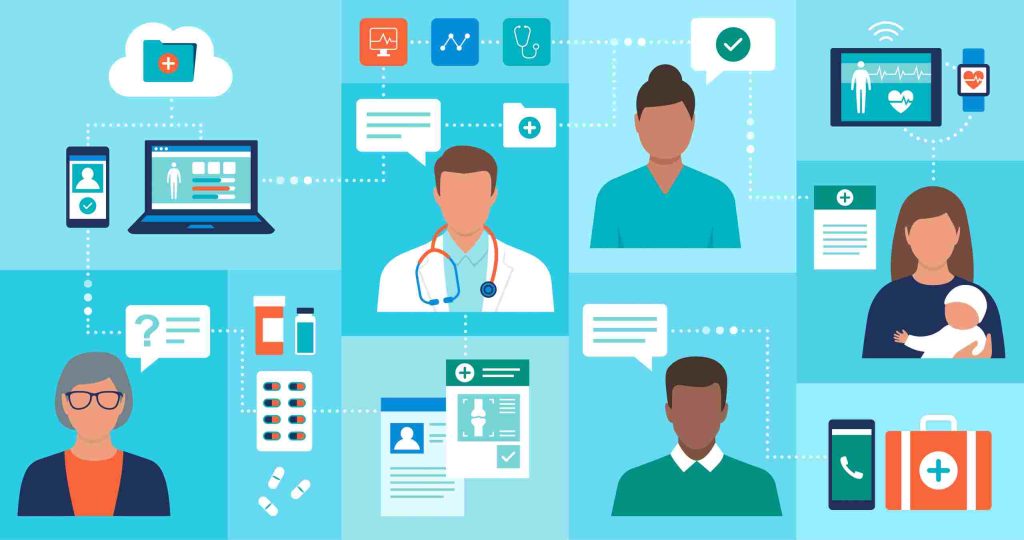There’s an age-old paradigm when it comes to the adoption of new technology. As users move to embrace the ease and convenience that comes with technological progress, the speed at which the technology is being adopted often outpaces the practical implications around it. That leaves policymakers as well as those involved in the whole structural ecosystem scurrying to play catch up.
The accelerating traction of telemedicine – among providers and patients alike – has resulted in an imperative for updated policies across multiple domains. Policymakers at both the federal and state level are moving expeditiously to respond – equitably, fairly, prudently, and responsibly.
This is especially true in coverage and payment. Providers and payers are urgently seeking guidance surrounding many of the regulatory flexibilities and waivers implemented during the public health emergency – currently set to expire at the end of this calendar year. Creating certainty when it comes to payment is critically important, along with alignment across the payers to ensure seamless integration, maintenance of access to care and sustainability of the extensive investments that providers and health care systems have made to integrate telehealth into everyday care delivery models.
Future considerations needed regarding eVisits and eConsults
The digital transformation of care has enabled new modalities of telehealth to begin to scale. Telemedicine, traditionally employed as a synchronous video-based encounter (i.e. the provider and patient are interacting with one another in real time, much as they would in person) can also be delivered asynchronously (i.e. the interactions do not require the patient and the provider to be communicating real-time). As part of an asynchronous exchange, patients might go online at their convenience through a patient portal to communicate with their provider related to a new complaint or concern. The provider can review the patient’s concerns, along with the medical record, and follow up online or, if not resolvable, schedule a video visit or an in-person visit as appropriate. Such an asynchronous exchange, generally utilized for low acuity conditions, is known as an eVisit, an efficient and convenient way for patients to access care.
The efficiencies are equally compelling when it comes to the eConsult, an asynchronous modality that enables primary care providers to obtain the input from a specialist in the context of the electronic patient record. Via this provider-to-provider modality, in many cases, the primary care provider can receive input from the specialist and manage the condition without the patient needing to be seen by the specialist.
There’s research that suggests that both providers and patients are continuing to take advantage of online interactions. In examining payer data from health care organizations from the third quarter of 2020 vs. the same period two years later, Trilliant Health found that billings for online visits were up 40 percent. Overlay that statistic with the findings from one study showing that showed patients use of digital communications tools increased by more than 50 percent during the pandemic.
Fast forward to 2024, there still remains uncertainty and malalignment across the payers as it relates to permanence of the COVID-19 regulatory flexibilities, and a lack of certainty surrounding coverage of asynchronous modalities. In addition, from a health equity perspective, following the sunset of the public health emergency, coverage of audio-only services remains disappointingly inconsistent across the payers.

Although the Virginia General Assembly did not focus on policies surrounding asynchronous telehealth in 2024, informed by data surrounding the cost effectiveness and improved access imparted by these modalities, coverage of eVisits and eConsults will be important considerations going forward.
“The Virginia General Assembly has been a national leader in the promotion of sound policies related to telemedicine both before andafter the COVID-19 public health emergency” says Dr. Karen S. Rheuban, a pediatric cardiologist at UVA’s Children’s Hospital, Director of the Center for Telehealth at UVA and board chair of the Virginia Telehealth Network. “Telehealth has played a critically important role in mitigating workforce shortages, improving access to care, and providing patient-centered care. With the BEAD funding allocated to the Commonwealth to expand broadband access, we envision a day in which every Virginian can equitably receive care via telehealth, synchronously or asynchronously, whether from home, work, or at a nearby health care facility.”

